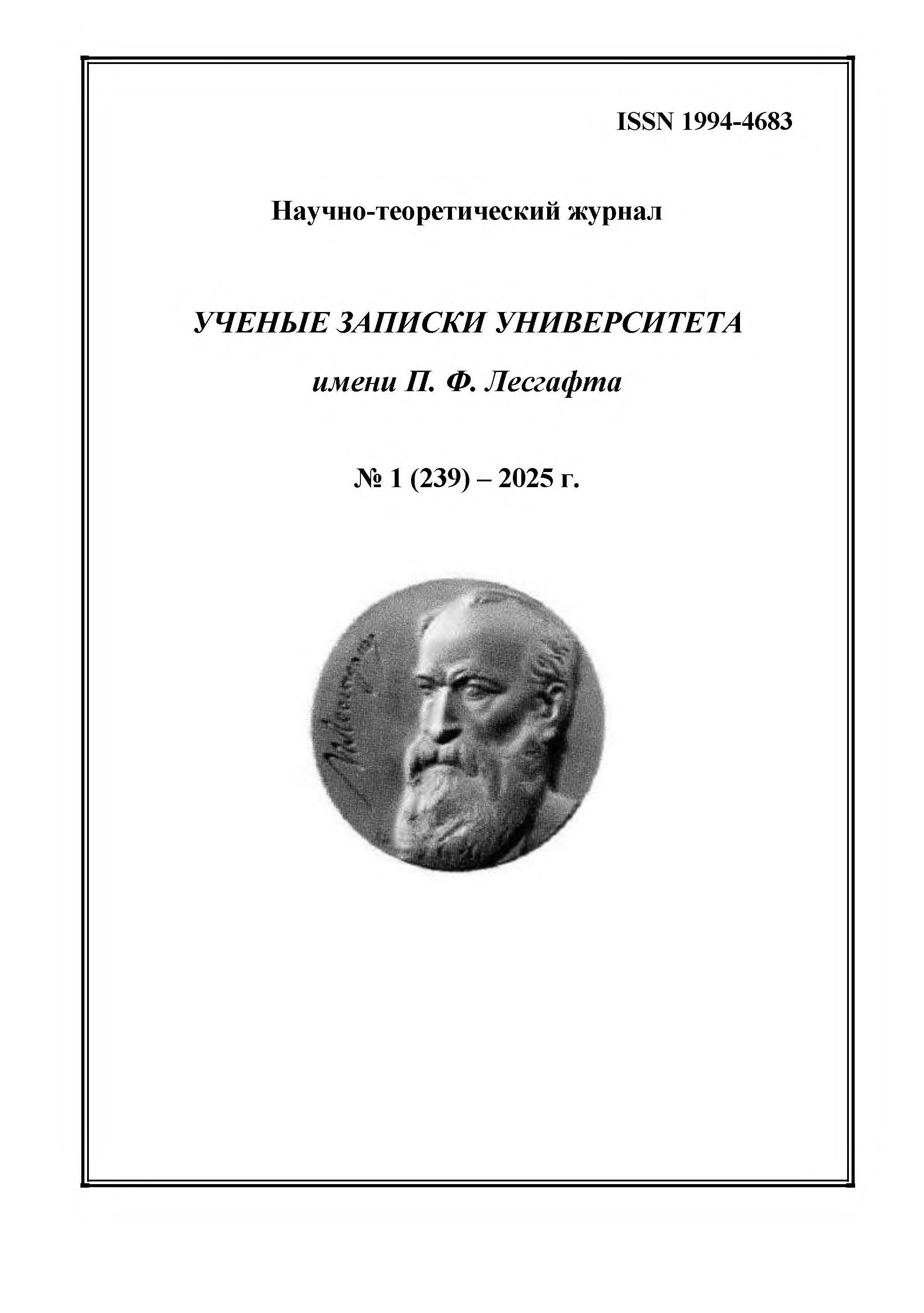KAZAN, Russian Federation
CSCSTI 77.29
The article presents the features of training for low forward balance in split with a hoop at the initial preparation stage in rhythmic gymnastics. Biomechanical indicators of low forward balance in split are defined. The purpose of the study is to identify the features of training for low forward balance in a split with a hoop. Research methods and organization. The analysis of scientific and methodological literature was applied; pedagogical observation; biomechanical analysis; pedagogical experiment; pedagogical testing; expert evaluation methods; and mathematical statistics methods. The experiment was conducted at the Federal Sports Center for Gymnastics in Kazan, Republic of Tatarstan, in collaboration with the Department of Theory and Methodology of Gymnastics at the Volga Region State University of Physical Culture, Sport and Tourism. Gymnasts from the NP-2 group, aged 7-8 years, from the Municipal Budget Institution Sports School of Olympic Reserve 'Privolzhanka' participated in the experiment. Research results and conclusions identified and determined the mechanical conditions for maintaining a low forward balance in a split; the leading muscle groups essential for the quality of pose fixation and balance maintenance (the hip abductor muscles, the knee extensor muscles, and the ankle joint extensors); three areas of work have been identified: 1) improving physical fitness; 2) enhancing technical preparedness; 3) training in the technique of low forward balance in a split with a hoop.
rhythmic gymnastics, balance, biomechanical indicators, muscle work, leading joints, model characteristics, physical training, technical training
1. Arkhipova Yu. A. (1998), “Basic training of young gymnasts in apparatus exercises”, abstract of dissertation. ... cand. ped. Sciences, 13.00.04, St. Petersburg, 24 p.
2. Biryuk E. V. (1981), “Rhythmic gymnastics, Kyiv, Glad. School, 102 p.
3. Karpenko L. A., Viner I. A., Sivitsky V. A. (2007), “Methodology for assessing and developing physical abilities in rhythmic gymnastics practitioners”, Moscow, 76 p.
4. Koba E. V. (2024), “Methodology for developing girls' balance ability at the initial stage of training in rhythmic gymnastics”, State and prospects for the development of modern science and education, Proceedings of the international scientific and practical conference, Moscow, pp. 129–139.
5. Medvedeva E. N. (2016), “Objective factors that determine the value of the difficulty of balances in rhythmic gymnastics”, Scientific notes of P.F. Lesgaft University, No. 3 (133), pp. 157–162.







